Fracture Sounds Brass Band Soloists KONTAKT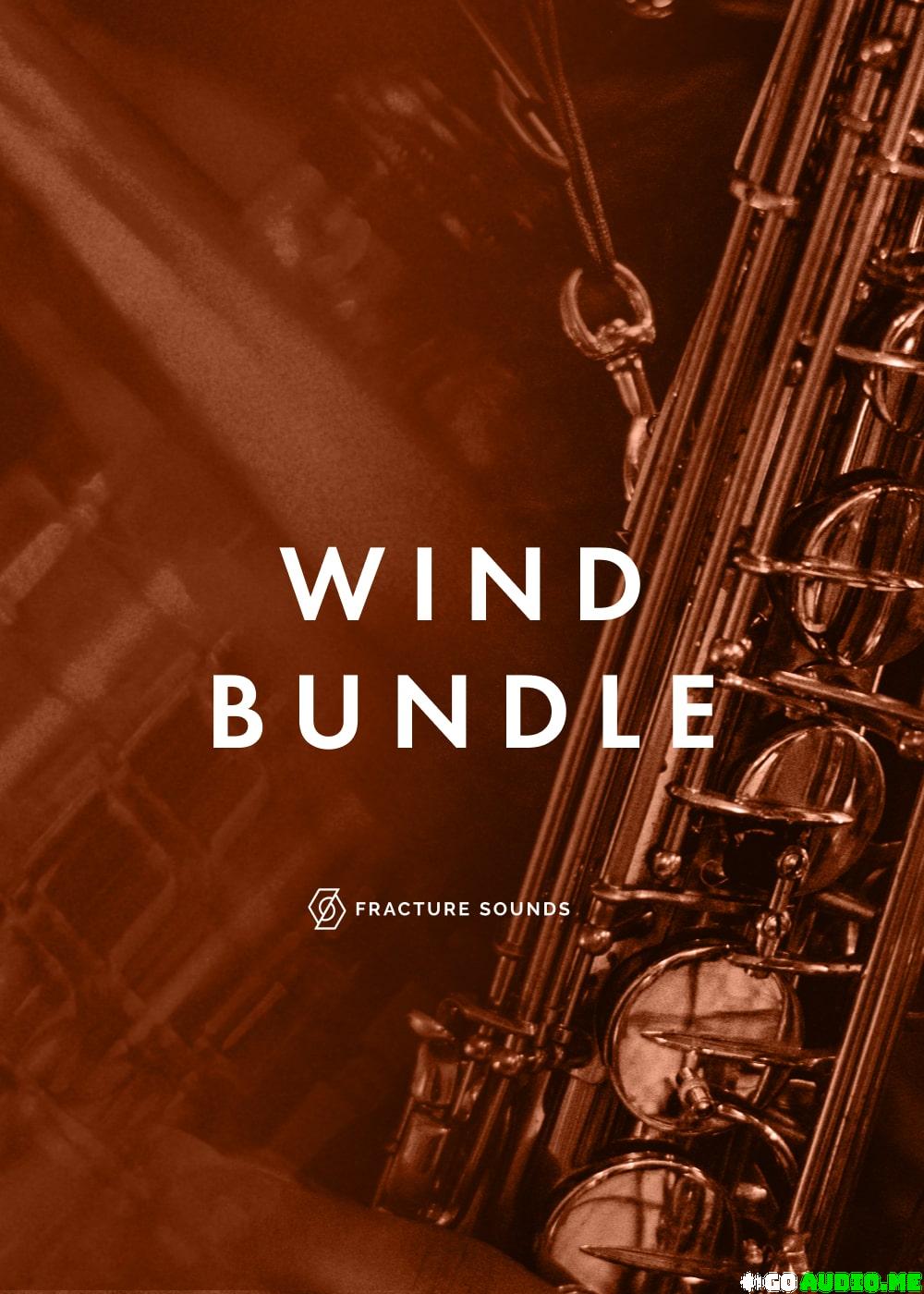
Brass Band Soloists brings together the finest instrumentalists in the North of England, with a refined interface and innovative legato programming that produces unparalleled realism. Intro offer ends 5th November.
The traditional brass band is a cornerstone of the British classical music scene, featuring warm, lyrical instruments rarely found in the brass sections of traditional orchestras. Consequently, they are often underrepresented in sample libraries.
In the North of England, where Fracture Sounds is based, lies the heartland of brass band music, so naturally many of our team members have performed in brass band ensembles. This personal experience and intimacy with the instrument made this library the natural candidate for becoming our first commercial legato library.
Leveraging our network of skilled players, we brought together top talent from the region, including competition winners from renowned bands like the Black Dyke Band and the Grimethorpe Colliery Band (featured in the film Brassed Off).
Each player was recorded individually in the large hall of Nave Studios, but our innovative Instrument Placement options allow for easy spatial adjustments. This feature enables the ensemble to blend seamlessly with other instruments in your existing sample library collection, providing versatility and integration. Covering a wide sonic range, the Soprano Cornet, Cornet, Flugelhorn, Tenor Horn, and Euphonium included in this package offer distinct timbres that are much softer compared to their orchestral counterparts, and paired with our new legato engine, these brass instruments have never sounded more realistic in the digital domain.
Say goodbye to the tedious task of dragging MIDI across your timeline to perfectly sync transitions with the tempo of your composition. In Smart Mode, the instrument intelligently analyses incoming MIDI notes and selects the correct transition length, ensuring flawless playback every time and eliminating the need for further editing, while delivering a truly authentic sound.
The key to this feature’s realism lies in latency – by delaying the audible output, the engine is able to ‘look ahead’, and make adjustments to the performance in anticipation of upcoming notes – just like a real player would. The higher the latency, the more natural the performance. The latency figure shown in the legato settings is completely accurate, so you can easily compensate for this using the negative track delay feature in your DAW. This allows the instrument the time it needs to analyse the incoming MIDI data, while maintaining perfect timing—provided the MIDI is correctly quantised. With this feature, you can now spend more time composing, and less time nursing the instrument.
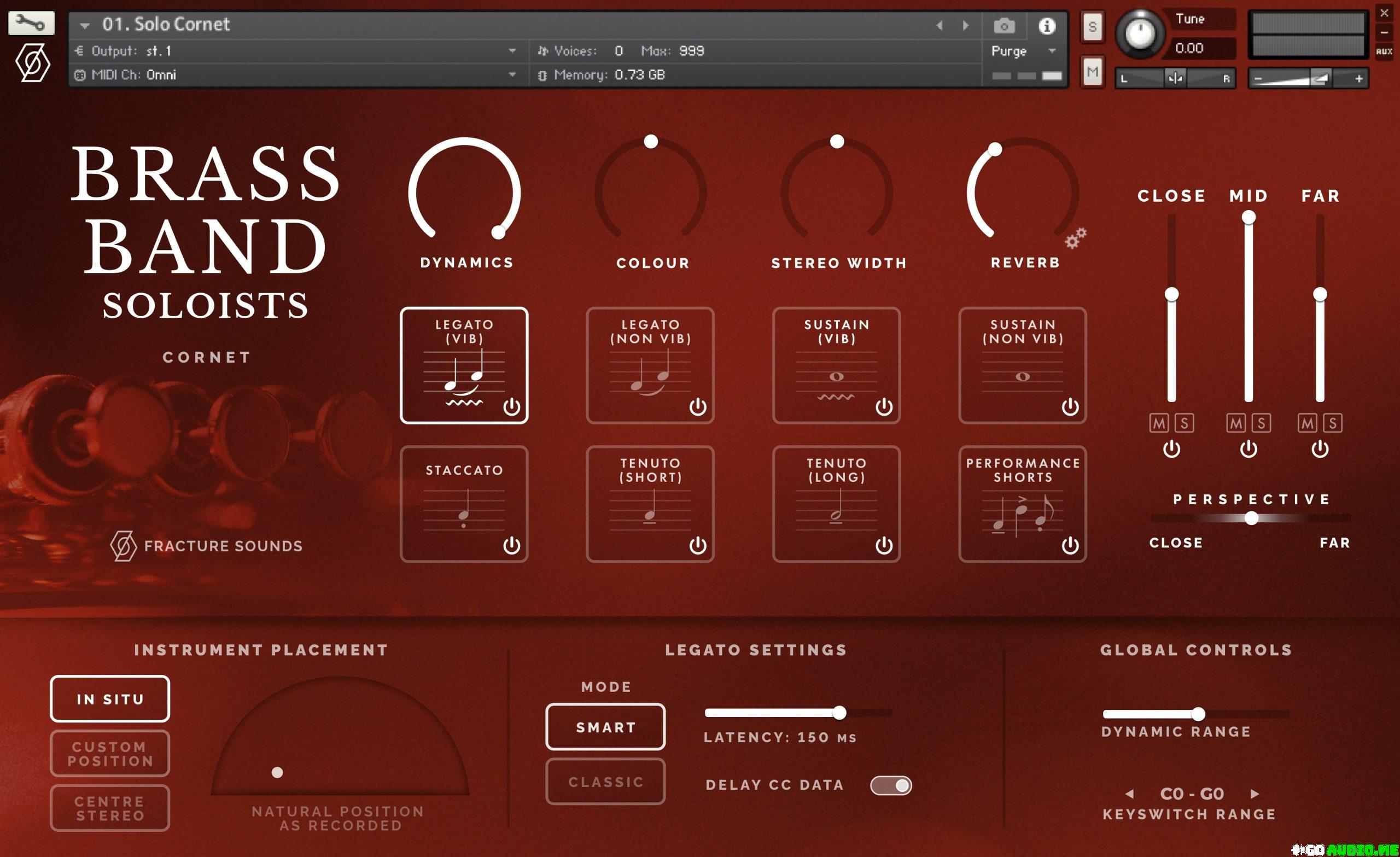
Legato Options
In addition to Smart Legato, we have included Classic mode, which behaves closer to existing legato libraries on the market, offering a single speed control. For more information about the two legato performance modes and when to use them, please see the user manual.
The legato is divided into two types: Non-Vibrato and Vibrato, which can be switched seamlessly using keyswitches while triggering a note. Keeping these as separate articulations, rather than combining them on a vibrato slider, preserves the soloistic quality of each instrument, as it avoids any doubling effect at the crossover point between samples.
Both legato types also feature slurred and tongued performances, triggered based on the velocity of each note.
Place Instrument Anywhere
Another new tool we have added to this brand-new interface is instrument placement, offering three options. In Situ has the players positioned as recorded, in their typical Brass Band seating layout.
The Custom Position mode allows you to freely place the instrument in a different position in the room, which can be useful when using these instruments in different ensemble configurations, for example when using them in an orchestral context. This mode uses Impulse Responses recorded from each seating position, through the same microphone setup, allowing for very convincing results which wouldn’t be achieved by panning alone.
We have also included a ‘Centre Stereo’ option, which uses a separate set of microphones positioned with the instrument in the centre of the soundstage. This overrides the main microphone mixer and eliminates the natural panning in the room, offering a wide centred stereo image, which can be processed further with panning and reverb if desired.
Microphone Positions
As with our other libraries recorded in large acoustic spaces, Brass Band Soloists offers three stereo microphone positions: Close, Room, and Far. For a drier sound, you can emphasise the Close signal, while the Far mics can be leaned on to capture the full depth of the hall. This flexibility is easily controlled through our Perspective Slider, or by muting and purging the mic signals you do not require.
Meet the Musicians
In the British Brass Band the Cornet is seen as the equivalent of the 1st Violin in an Orchestra, so we were proud to invite Jamie Smith on to the project who at the time of recording was the 1st Cornet and Leader of the Grimethorpe Colliery Band- one of the most renowned brass bands in the world. The Cornet sits in the same range as the Trumpet, but offers a much more mellow sound which contrasts the sharp brightness provided by the Trumpet.
Unparalleled Experience
Sitting next to Jamie on both Soprano Cornet and Flugelhorn is the previous 1st Cornet of the Grimethorpe Colliery Band, Alan Morrison, who was in the band just before the period dramatised in the film Brassed Off. We were delighted to have Alan’s experience on this project, and it’s shown through his fantastic playing on the Soprano Cornet, which provides a brighter tone than the Cornet, as a singular solo instrument that can cut through the entire Brass Band. The Flugelhorn also sits in the same range as the Cornet, but provides a darker supporting timbre, again contrasting any instrument you would find in a traditional orchestral brass library.
2023 National Champion
At the lower end of the instrument range is the Tenor Horn, played by Siobhan Bates, who performs in the Black Dyke Band who at the time of recording were the UK Brass Band champions. The Tenor Horn sits in a similar range to its orchestral counterpart, the French Horn. But as with all of the Brass Band instruments, provides a more mellow tone and its construction enables techniques like vibrato to be easily playable- a more difficult articulation to achieve on the French Horn.
Director of Music
Finally, the Euphonium played by Huddersfield University’s Director of Music, and multi-instrumentalist, Jim Fieldhouse. This bass instrument provides a nice balance between the orchestra’s Tuba and Tenor Trombone. Whilst it cannot perform the low notes of the Tuba, it does provide a warm bass tone which matches the timbre provided by the other instruments.
Articulation List
Legato (with and without vibrato)
There are two Legato articulations that include intervals performed with and without vibrato. Velocities below 100 will trigger slurred legato, whilst 100 and above will trigger tongued legato.
Sustain (with and without vibrato)
There are two polyphonic sustain articulations, played with and without Vibrato.
Staccato
A very short note with a sharp attack. Dynamics are controlled by velocity.
Tenuto (Short)
A short articulation with a rounded attack and extended decay compared to the Staccato. Dynamics are controlled by velocity.
Tenuto (Long)
An extended Tenuto with a more rounded attack and longer decay. Dynamics are controlled by velocity.
Performance Shorts
A multi-articulation that contains all three shorts, triggered by velocity (a higher velocity triggers a longer articulation). Dynamics are controlled by the mod wheel.
Features
- 4 of the best British Brass Band Soloists, performing across 5 instruments
- Includes Soprano Cornet, Cornet, Flugelhorn, Tenor Horn, and Euphonium
- 3 Microphone Signals (Close, Room, Far)
- Advanced legato performance engine
- Instrument Placement (In Situ, Custom Position, and Stereo Centre)
- Recommended 16GB RAM, 8 Core Processor. Store on SSD.
- Full NKS support – works with Komplete Kontrol hardware.
- 24GB download size (NCW compressed from a 50GB sample pool).
- Download through Native Access.
- Runs in the free Kontakt Player (v6.7 or later). No additional sampler software needed.
Homepage:-https://fracturesounds.com/product/brass-band-soloists/
![]()
Fracture_Sounds_Brass_Band_Soloists.part01.rar – 2.7 GB
Fracture_Sounds_Brass_Band_Soloists.part02.rar – 2.7 GB
Fracture_Sounds_Brass_Band_Soloists.part03.rar – 2.7 GB
Fracture_Sounds_Brass_Band_Soloists.part04.rar – 2.7 GB
Fracture_Sounds_Brass_Band_Soloists.part05.rar – 2.7 GB
Fracture_Sounds_Brass_Band_Soloists.part06.rar – 2.7 GB
Fracture_Sounds_Brass_Band_Soloists.part07.rar – 2.7 GB
Fracture_Sounds_Brass_Band_Soloists.part08.rar – 2.7 GB
Fracture_Sounds_Brass_Band_Soloists.part09.rar – 817.6 MB



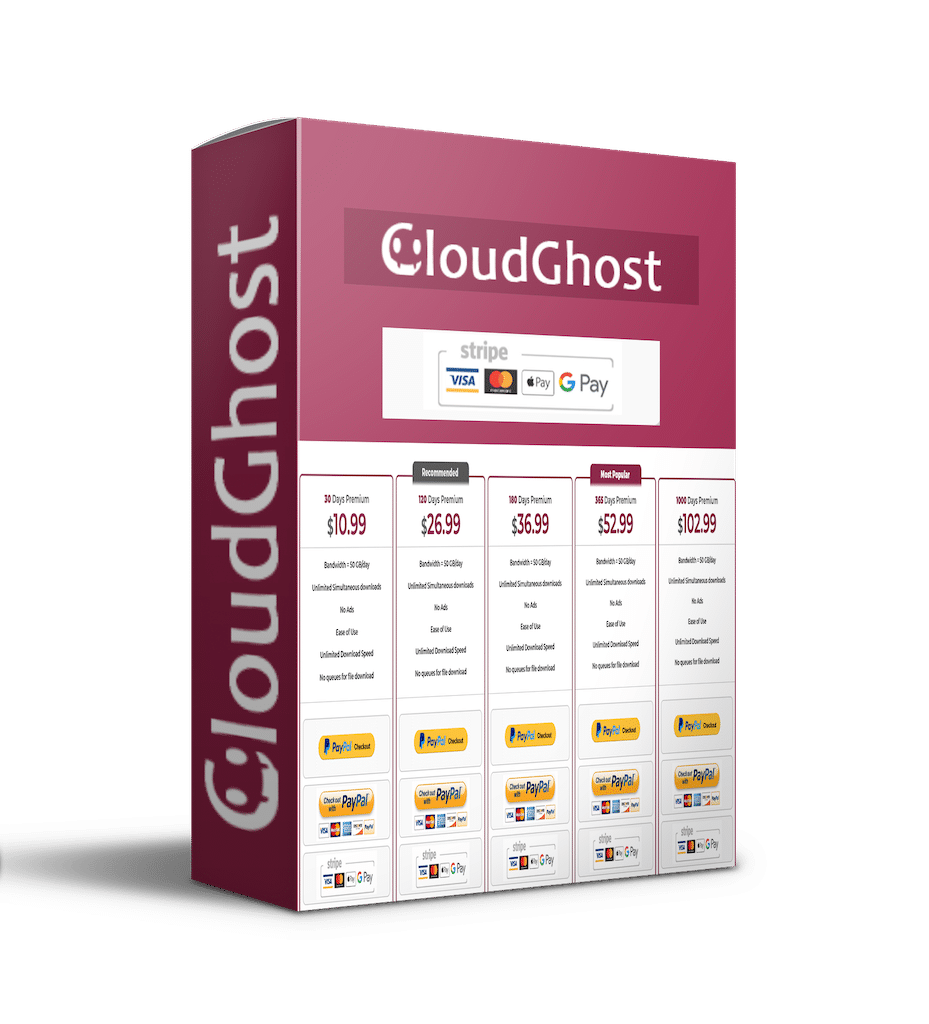
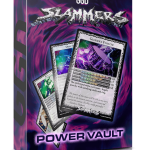



![Toontrack Hollowbody EBX [WIN+MAC]](https://www.goaudio.net/wp-content/uploads/2024/09/Toontrack-Hollowbody-EBX-150x150.png?v=1726103695)
![Toontrack LATEST RELEASES MIDI BUNDLE [SEP 2024]](https://www.goaudio.net/wp-content/uploads/2024/09/gandr-collage-11-150x150.jpg?v=1725764744)
![Blockbuster Sound Sand Dune & Mockingbird [BUNDLE]](https://www.goaudio.net/wp-content/uploads/2024/08/blockbuster-sound--150x150.png?v=1724378090)

![Blockbuster Sound Mermaids Sirens & Horror Pack [BUNDLE]](https://www.goaudio.net/wp-content/uploads/2024/08/Blockbuster-Sound-150x150.png?v=1723854097)




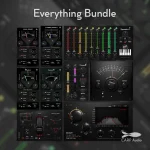
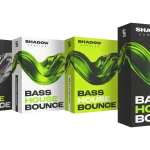
![Toontrack LATEST MIDI PACK [MARCH 2025]](https://www.goaudio.net/wp-content/uploads/2025/03/Toontrack-LATEST-MIDI-PACK-MARCH-2025-150x150.png?v=1743055485)